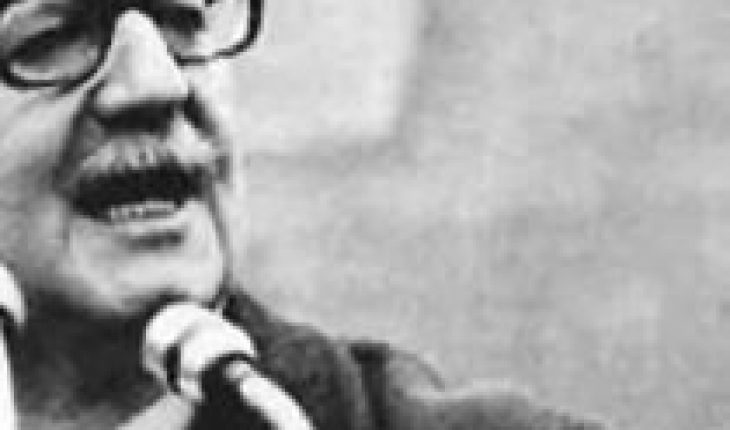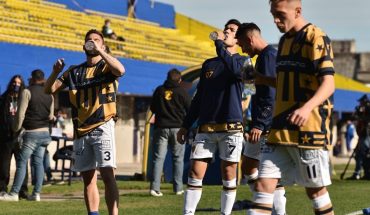
These days several left-wing groups are called upon to commemorate the “50 years of Salvador Allende’s election,” in reference to September 4, 1970. Some pointing should be made.
It is well known, but it is not known and not to say it may not even come to know, that Allende is not elected president on September 4, 1970, but on October 24 of that year. Nor is he elected by the people, but by the Full Congress, in the real run-off that the 1925 Constitution established that it should be held in the legislative branch, if no candidate reached an absolute popular majority.
The second subparagraph of Article 64 of the 1925 Constitution provided:
“If this (absolute) majority does not result from (popular) scrutiny, the Full Congress will choose between citizens who have obtained the two highest relative majority…”.
Some say that what Congress was doing by “tradition” was simply “ratifying” the first majority of the popular election.
As can be seen from the transcribed provision, “ratifying” was not in the Constitution. What was established was actually a second round, but not popular, but in the Plenary Congress, where congressmen secretly voted in an urn and then proceeded to the counts. They were contested elections and there was no second-round custom to be content with that popular verdict and respect the first relative majority. In fact, in 1958 the left grouped in the FRAP voted for Allende in the election of the Full Congress.
With regard to “tradition”, the truth is that Congress, during the term of the 1925 Constitution, had to elect presidents in this second congressional round on only 4 occasions: Gabriel González in 1946; Carlos Ibáñez in 1952; Jorge Alessandri in 1958 and Salvador Allende in 1970. On all these occasions, the first relative majority is imposed, but not by a “tradition, or “recognition” of the second place, as we have already seen, since until the last moment in Congress the sector occupying that place voted for its own candidate.
But never in the whole story has there been a result as narrow between the first and second majority as that given in 1970. At 46 and 52, it was 10 percentage points or just under between the first majority and their closest pursuer: there was not much to discuss. The closest thing to date had been the 58th choice, where Alessandri beat Allende by just 2.71 percentage points. In 1970 the position of the same rivals 12 years earlier was reversed, but this time Allende’s advantage was reduced to less than half, just 1.34%.
And Allende’s election in Congress was not in practice easy. To prevent this, even the possibility of DC voting for Alessandri, provided that Alessandri resigned after assuming, thus required a new election in which Frei could be a candidate (immediate re-election was prohibited) and thus a new presidential term was secured thanks to the votes of the right, terrified of the possibility of the left coming to power. That was the so-called “track one” or “Frei gambit”. Christian Democracy was suspicious of the will, but of Allende, at least of the parties that supported it, of maintaining respect for “bourgeois” democracy. Therefore, the PDC’s support votes were eventually conditional on constitutional reform, the “Guarantee Statute” that strengthened constitutional guarantees and prevented a totalitarian drift imposed from the executive. That negotiation even had a first failure, as the UP initially rejected the agreement. That pushed the D.C. to vote for Alessandri. In Nona time, the UP reconsidered and was ready for constitutional reform in order to come to power. In this way it reached the second round to be held in the Full Congress on October 24 with a DC-UP agreement, which managed to get the party’s votes up to that point in the government to turn to Allende, who prevailed over Alessandri by 153 against 35 votes and was thus proclaimed president of Chile.
Everything said is known to anyone relatively cultured in our recent political history, but the september 4 celebration as Allende’s election day tends to obscure it. It remains the impression that Allende would have been chosen by a large popular majority in direct choice. That wasn’t the case. The basis of political support from the Allende government was not the popular majority, which never had, but the political agreement with the DC, an agreement that soon began to crack, for many reasons that we cannot analyze here.
From an institutional point of view, the second round in the Plenary Congress was a parliamentary mechanism, embedded in a strongly presidential regime. This created an anomaly, as Congress could elect president by an absolute majority, but if he lost initial support, Congress itself could not replace him, as would be the case in such a parliamentary regime. There was only the extreme and traumatic alternative of the constitutional indictment, which required 2/3 that was difficult to reach. That was the last institutional option on the right, which was played to reach that majority in the March 1973 parliamentary election. It failed in that attempt, as the CODE (DC-Right Alliance) was the winner in that UP election (55.49 vs/ 44.23%), but did not reach the quorum required to constitutionally dismiss Allende. Institutionality was in the way there, with no capacity to give way to the acute crisis that was being lived.
Allende, aware of the break-in of the political system, tries to open a democratic path of resolution through a plebiscite, which all indicated that he would lose, but that he would avoid a violent exit and allow an orderly withdrawal from the left of the government. The president speaks publicly of the possibility of this plebiscite in the speech that on June 29 at night, already suffocated the tackled starring the Armored Regiment No. 2 that day, gives to its adherents on the outskirts of La Moneda. However, it ended June, it was all July and August and the president, because of opposition from the UP parties, did not decide to formally raise the plebiscite as an outlet. Legend has it that he was going to announce that plebiscite on the same day, September 11, but there is no historical evidence of it. Either way, FFAA coupist bosses get ahead of themselves, take the lead and unleash the blow and with it the most sinister night in Chile.
50 years after September 4, 1970, and led in a constituent process that can allow the Chilean people to end the dictatorial Constitution, badly made up in 2005, and regain the democratic power of the majority so long denied by pinochetist traps, it is worth looking at our historical reality head-on. It is no longer time for self-combing and self-instolling mythologies in any sector. Let’s understand what went wrong and devise antidotes so it doesn’t happen again. Thinking of a flexible parliamentary-based regime, which allows Congress or whatever the future legislative body is called, to ely off the head of government but can also replace it when it loses the trust of an absolute majority of the people’s representatives, can be a way of constructively learning from our tragedy.
The content poured into this opinion column is the sole responsibility of its author, and does not necessarily reflect the editorial line or position of El Mostrador.





